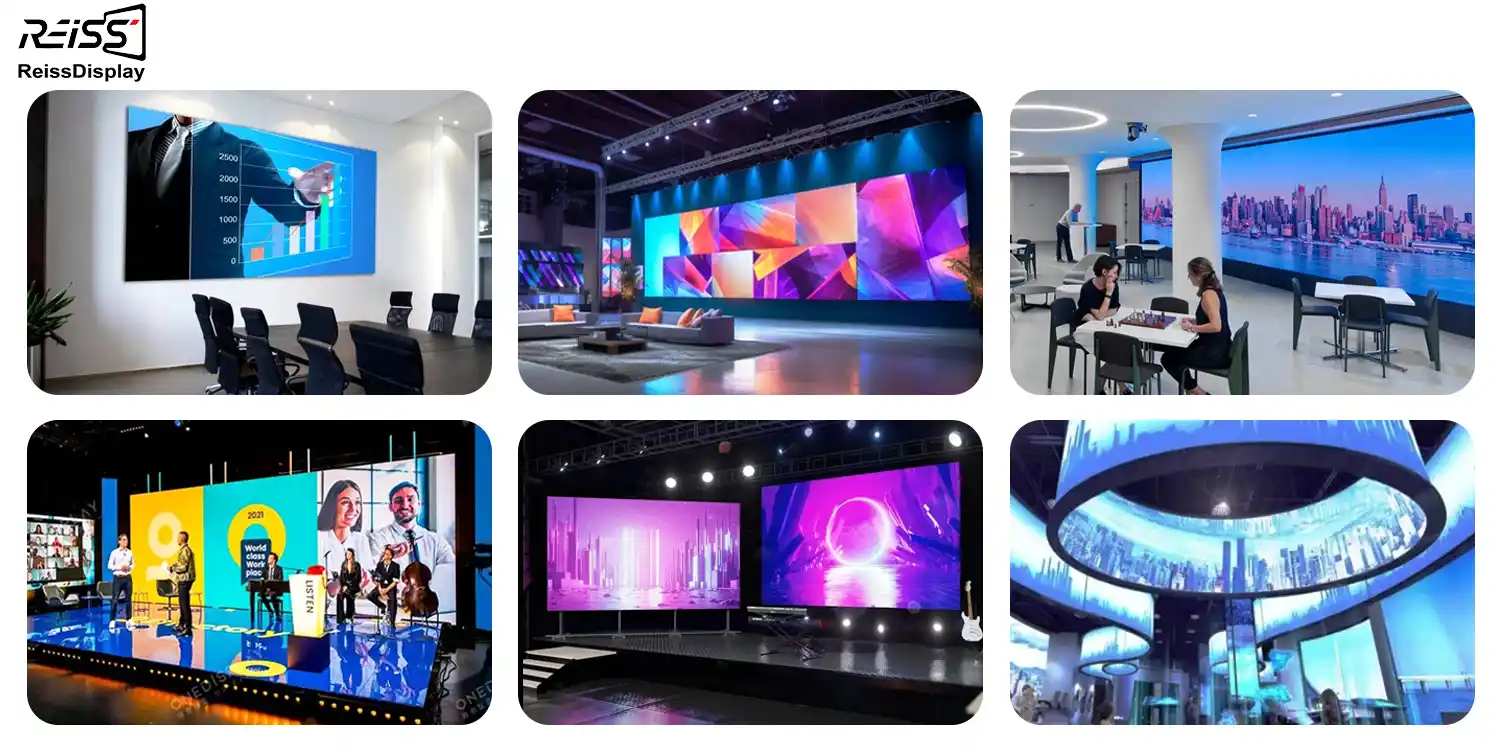In today’s visually driven world, selecting the right LED display has become a critical decision for businesses across industries — from retail and hospitality to corporate communications and event production. An effective LED display not only enhances brand visibility but also improves audience engagement and delivers measurable return on investment (ROI).
This guide will walk you through everything you need to know when choosing an LED display, including key technical specifications, installation options, and best practices to ensure your investment aligns with both current and future business needs.

Before diving into product details, it's essential to conduct proper planning to ensure the LED display meets your specific requirements.
Space Analysis: Measure the physical dimensions of the intended installation area, including height, width, and depth. Also assess accessibility for installation and maintenance.
Content Strategy: Determine the primary use of the screen — whether it’s for static advertising, live video feeds, data visualization, or interactive content.
Technical Requirements: Understand the minimum performance expectations, such as pixel pitch, resolution, brightness, and refresh rate.
Viewer Experience: Analyze where the target audience will be located and calculate optimal viewing distances and angles to ensure readability and visual impact.
System Integration: Plan how the display will connect to media players, control systems, and network infrastructure to support seamless operation.
Choosing the correct size and resolution is crucial to delivering clear visuals that capture attention without overwhelming the space.
| Use Case | Ideal Pixel Pitch |
| Indoor Boardrooms | 2–4 mm |
| Retail Displays | 3–6 mm |
| Stadium Screens | 10–20 mm |
| Transportation Hubs | 6–10 mm |
Pixel Pitch: This refers to the distance between adjacent pixels. Lower values result in higher image clarity and are ideal for close-up viewing.
Native Resolution: The actual number of pixels the display can show. Match this with your source content (e.g., HD, 4K, or 8K) for the best results.
Virtual Resolution: Some LED displays use upscaling technology to enhance lower-resolution content, improving perceived sharpness.
The environment in which the LED display will operate determines the necessary level of brightness to maintain visibility under various lighting conditions.
| Environment | Brightness Range |
| Indoor Offices | 500–1,000 nits |
| Retail Spaces | 1,000–2,500 nits |
| Outdoor Displays | 5,000–10,000+ nits |
Outdoor displays require high brightness to combat ambient sunlight, while indoor setups should balance visibility with energy efficiency and viewer comfort.
Selecting the appropriate installation type ensures the display integrates seamlessly with your architecture and operational workflows.
Fixed Installations: Permanent mounting solutions ideal for lobbies, conference rooms, and façades.
Modular Systems: Flexible arrangements that allow expansion or reconfiguration based on evolving needs.
Portable Solutions: Mobile cabinets equipped with wheels, perfect for temporary events, trade shows, and pop-up activations.
Each method comes with its own set of design and structural considerations, so work closely with your vendor to determine the best fit for your application.
Modern LED displays are more than just screens — they're powerful communication tools that benefit greatly from intelligent control systems.
Real-Time Content Scheduling: Automate content playback based on time, day, or context.
Multi-Zone Management: Divide the screen into zones for simultaneous display of different content types.
Remote Monitoring: Access system diagnostics and manage updates remotely to reduce downtime.
Emergency Alert Integration: Display urgent notifications or alerts during emergencies or operational changes.
These features not only improve user experience but also streamline operations, especially for large-scale deployments.
A well-chosen LED display requires more than just purchasing — successful implementation involves several important steps.
Conduct ambient light testing to adjust brightness settings accordingly.
Ensure adequate ventilation to prevent overheating and prolong system lifespan.
Schedule preventive maintenance to avoid technical failures and extend longevity.
Plan for future upgrades to keep pace with technological advancements.
By addressing these implementation details early, you’ll minimize disruptions and maximize uptime.
To truly justify the cost of an LED display, it’s important to look beyond initial pricing and consider the overall value it brings to your business.

Calculate potential advertising revenue if used in commercial environments.
Evaluate energy consumption ratings to reduce long-term operating costs.
Assess the total cost of ownership, including installation, maintenance, and software licensing.
Review service plan options and warranty terms to minimize unexpected expenses.
When planned strategically, LED displays offer a strong ROI through increased customer engagement, enhanced brand presence, and improved internal communication.
Before making a purchase decision, ensure you’ve covered all bases:
Verify manufacturer certifications such as ISO, UL, and CE for quality assurance.
Test warranty coverage and after-sales service availability.
Request demonstration units to evaluate performance firsthand.
Compare service agreements from multiple vendors.
Review delivery and installation timelines to avoid project delays.
Investing in an LED display is more than just a technological upgrade — it's a strategic business decision that impacts how your brand communicates, engages, and operates. By understanding your unique needs and following this comprehensive guide, you can confidently select an LED display that delivers outstanding performance, durability, and scalability.
Whether you're enhancing a retail store, upgrading a corporate boardroom, or creating a dynamic stage setup, the right LED display will elevate your business presence and captivate your audience like never before.
For tailored LED display solutions designed to meet your specific business goals, trust industry leaders like Reissopto to provide cutting-edge technology, expert support, and innovative products built for success.
Hot Recommendations
Hot Products
Get a Free Quote Instantly!
Talk to Our Sales Team Now.
If you are interested in our products, please contact us promptly
Reach out to our sales team to explore customized solutions that perfectly meet your business needs and address any questions you may have.
Email Address:info@reissopto.comFactory Address:Building 6, Huike Flat Panel Display Industrial Park, No. 1, Gongye 2nd Road, Shiyan Shilong Community, Bao'an District, Shenzhen city , China
whatsapp:+8615217757270